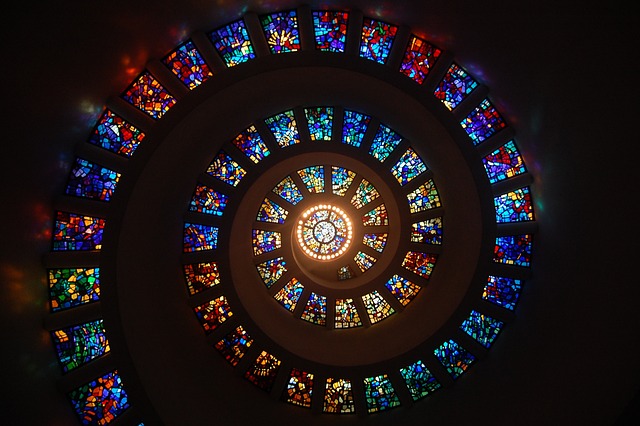The evil eye is not a religion, but rather a belief or superstition that exists in various cultures and religions around the world. It is commonly associated with Mediterranean and Middle Eastern cultures, including Islam, Judaism, and Christianity, as well as certain pagan and folk traditions. The concept of the evil eye revolves around the belief that certain individuals have the power to cause harm or misfortune to others through their envious or malevolent gaze.
Table of Contents
The Origins and Symbolism of the Evil Eye in Different Religions
The evil eye is a concept that has been present in various religions and cultures throughout history. It is often associated with a curse or a malevolent gaze that brings harm or misfortune to those who are targeted. While the evil eye is commonly associated with superstition, it holds significant meaning in different religions.
One of the earliest mentions of the evil eye can be found in ancient Mesopotamia, where it was believed to be a powerful force that could cause harm. In this region, the evil eye was associated with the god Enki, who was believed to have the ability to cast a malevolent gaze upon individuals. This belief in the evil eye spread to other ancient civilizations, including the Egyptians and the Greeks.
In ancient Egypt, the evil eye was associated with the god Horus, who was often depicted with a protective eye symbol. This symbol, known as the Eye of Horus, was believed to ward off the evil eye and bring protection and good fortune. The Eye of Horus became a popular symbol in Egyptian culture and was often worn as an amulet or used in protective rituals.
In Greek mythology, the evil eye was associated with the goddess Athena, who was believed to have the power to cast a curse with her gaze. The Greeks believed that the evil eye could bring misfortune and harm to those who were targeted. To protect themselves from the evil eye, the Greeks used various talismans and amulets, such as the blue eye symbol, which was believed to reflect the evil gaze back to its sender.
In Judaism, the evil eye is mentioned in the Talmud, where it is referred to as “ayin hara.” According to Jewish tradition, the evil eye is caused by envy and jealousy and can bring harm to those who are targeted. To protect against the evil eye, Jews often use amulets and recite prayers or blessings. The Hamsa, a hand-shaped amulet, is a popular symbol used to ward off the evil eye in Jewish culture.
In Islam, the evil eye is mentioned in the Quran and is referred to as “al-ayn.” Muslims believe that the evil eye is caused by envy and jealousy and can bring harm or misfortune to those who are targeted. To protect against the evil eye, Muslims often recite prayers and blessings and use amulets, such as the blue eye symbol or the hand of Fatima.
In conclusion, the evil eye holds significant meaning in various religions and cultures. While the specific beliefs and symbols associated with the evil eye may vary, the concept of a malevolent gaze that brings harm or misfortune remains consistent. Whether it is the ancient Mesopotamians, Egyptians, Greeks, Jews, or Muslims, the evil eye has been a part of human belief systems for centuries. While some may dismiss it as mere superstition, for many, the evil eye is a powerful symbol of protection and a reminder to be mindful of envy and jealousy.
The Role of the Evil Eye in Folklore and Superstitions

The evil eye is a concept that has been deeply ingrained in folklore and superstitions across various cultures for centuries. It is believed to be a powerful force that can bring harm or misfortune to those who are unfortunate enough to be on the receiving end of its gaze. But what exactly is the evil eye, and what role does it play in different religious beliefs?
The evil eye is often associated with envy and jealousy. It is believed that when someone looks at another person with envy or ill will, their gaze can transmit negative energy and cause harm. This belief is prevalent in many cultures, from the Mediterranean region to the Middle East, and even in parts of South Asia.
In Greek and Roman mythology, the evil eye was personified as a goddess named Mati or Medusa. It was believed that her gaze could turn people to stone. To protect themselves from the evil eye, the ancient Greeks and Romans would wear amulets or charms, often in the form of an eye, to ward off its negative effects.
In Islamic culture, the evil eye is known as “al-ayn” and is considered a real and dangerous phenomenon. It is believed that the evil eye can cause illness, misfortune, or even death. To protect against it, Muslims often recite prayers or wear amulets with verses from the Quran. They also believe in the power of “ruqyah,” which is the recitation of specific verses or prayers to ward off the evil eye.
In Judaism, the evil eye is known as “ayin hara” and is also considered a real threat. It is believed that the evil eye can cause harm or bring about negative consequences. To protect against it, Jews often use amulets or charms, such as the hamsa or the red string bracelet, which are believed to have the power to ward off the evil eye.
In Hinduism, the concept of the evil eye is known as “drishti” or “nazar.” It is believed that the evil eye can cause illness, bad luck, or even death. To protect against it, Hindus often use various remedies, such as wearing amulets or tying a black thread around the wrist or neck. They also perform rituals and prayers to ward off the evil eye.
While the evil eye is not explicitly associated with any particular religion, it is deeply rooted in the cultural beliefs and superstitions of various communities. It is a concept that transcends religious boundaries and is widely recognized and feared across different faiths.
In conclusion, the evil eye is a powerful force that has played a significant role in folklore and superstitions for centuries. It is believed to bring harm or misfortune to those who fall under its gaze. While the evil eye is not tied to any specific religion, it is deeply ingrained in the cultural beliefs and practices of many communities around the world. Whether it is called “al-ayn,” “ayin hara,” “drishti,” or “nazar,” the evil eye remains a potent symbol of envy and ill will, and people continue to take precautions to protect themselves from its negative effects.
Religious Beliefs and Practices Surrounding the Evil Eye
The evil eye is a concept that has been present in various cultures and religions throughout history. It is believed to be a curse or a malevolent gaze that can cause harm or misfortune to those who are on the receiving end. While the evil eye is often associated with superstition and folklore, it is also deeply rooted in religious beliefs and practices.
In many cultures, the evil eye is seen as a spiritual force that can be cast upon someone intentionally or unintentionally. It is believed that certain individuals possess the power to give the evil eye, either through envy or jealousy. This belief is prevalent in many Mediterranean and Middle Eastern cultures, where the evil eye is considered a common threat.
Religious beliefs surrounding the evil eye vary from culture to culture. In some religions, such as Islam, the evil eye is considered a real and dangerous phenomenon. It is believed that the evil eye can cause physical and spiritual harm, and therefore, protection against it is highly valued. Muslims often recite prayers and wear amulets or talismans to ward off the evil eye.
Similarly, in Judaism, the evil eye is seen as a real threat. It is believed that the evil eye can bring about misfortune and illness. Jewish tradition offers various methods of protection against the evil eye, including wearing amulets and reciting prayers. The red string bracelet, known as the “Kabbalah bracelet,” is a popular talisman used for protection against the evil eye in Jewish culture.
In Hinduism, the concept of the evil eye is known as “nazar.” It is believed that the evil eye can cause harm to individuals, especially children and newborns. Hindus use various methods to protect themselves from the evil eye, such as hanging black threads or using amulets with protective symbols. They also perform rituals and prayers to ward off the negative effects of the evil eye.
Christianity also acknowledges the existence of the evil eye, although its interpretation and significance may vary among different denominations. In some Christian traditions, the evil eye is seen as a form of envy or jealousy, which goes against the teachings of love and compassion. Christians may use prayers and blessings to protect themselves from the evil eye and to seek divine intervention.
It is important to note that while the evil eye is deeply rooted in religious beliefs, it is also a cultural phenomenon. Many people, regardless of their religious affiliation, may believe in the power of the evil eye and take precautions to protect themselves from its effects. The evil eye is often seen as a universal concept that transcends religious boundaries.
In conclusion, the evil eye is a concept that is deeply intertwined with religious beliefs and practices. It is seen as a spiritual force that can cause harm or misfortune to those who are affected by it. While the specific religious beliefs surrounding the evil eye may vary, the need for protection against its effects is a common thread across cultures and religions. Whether through prayers, amulets, or rituals, people seek to safeguard themselves from the malevolent gaze of the evil eye.
The Evil Eye’s Impact on Cultural and Religious Traditions
The Evil Eye’s Impact on Cultural and Religious Traditions
Have you ever heard of the evil eye? It’s a fascinating concept that has had a significant impact on various cultural and religious traditions throughout history. The evil eye is believed to be a curse or a malevolent gaze that can cause harm or misfortune to those who are on the receiving end. But what religion is the evil eye associated with? Let’s explore this intriguing question together.
The belief in the evil eye is not limited to a specific religion. In fact, it is found in various cultures and religions around the world. From ancient times to the present day, people from different faiths have acknowledged the power of the evil eye and taken measures to protect themselves from its effects.
In many Middle Eastern and Mediterranean cultures, the evil eye is deeply ingrained in their traditions. It is believed that envy and jealousy can manifest as the evil eye, causing harm to others. To ward off this negative energy, people often wear amulets or talismans in the form of an eye. These symbols are thought to protect against the evil eye’s gaze and bring good luck.
In Islam, the concept of the evil eye is also recognized. The Prophet Muhammad himself spoke about its existence and advised his followers to seek protection from it. Muslims often recite prayers or wear amulets with verses from the Quran to safeguard themselves from the evil eye’s influence. This belief in the evil eye is not limited to any particular sect or region within Islam; it is a widespread belief among Muslims worldwide.
Moving beyond the Middle East, the evil eye is also present in other religious traditions. In Hinduism, for example, the concept of the evil eye is known as “nazar.” It is believed that certain individuals possess the power to cast an evil eye, which can bring misfortune or illness. To counteract this, Hindus use various protective measures, such as wearing amulets or tying a black thread around their wrists or necks.
Even Christianity has its own interpretation of the evil eye. In some Christian communities, the evil eye is seen as a form of envy or jealousy that can harm others. To protect against it, believers may use prayer, holy water, or blessed objects. The evil eye is not a central tenet of Christianity, but it is acknowledged and addressed within certain traditions.
It is fascinating to see how the belief in the evil eye transcends religious boundaries and is present in various cultures worldwide. Regardless of one’s religious affiliation, the fear of the evil eye and the desire for protection against its effects are universal.
In conclusion, the evil eye is not associated with a specific religion but rather permeates various cultural and religious traditions. From the Middle East to India and beyond, people have recognized the power of the evil eye and taken measures to protect themselves from its malevolent gaze. Whether through amulets, prayers, or other rituals, the belief in the evil eye is deeply ingrained in the fabric of many societies. So, the next time you come across the concept of the evil eye, remember that it is not limited to a single religion but is a shared belief that spans across cultures and faiths.
Conclusion
The evil eye is not associated with any specific religion. It is a belief or superstition that exists in various cultures and religions around the world.
For licensing reasons, we must provide the following notice: This content was created in part with the help of an AI.


